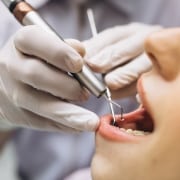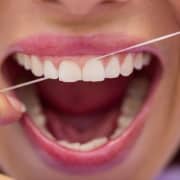How To Help Children Establish a Good Dental Hygiene Routine
Many young children dislike the daily chore of brushing and flossing their teeth. To help these children establish a good dental hygiene routine, parents need to make brushing and flossing more fun. In addition, parents need to help their child become accustomed to biannual cleanings and dental exams. Once a few primary teeth emerge, parents should schedule their child’s first dental exam with one of Chloe Dental’s pediatric dentists in Katy, Texas.
The Importance of Establishing a Good Dental Hygiene Routine Early On
When a child neglects to practice good oral hygiene, the likelihood that he or she will develop a cavity, experience pain and lose a tooth prematurely, increases.
4 Tips To Help a Child Establish a Good Dental Hygiene Routine
1. Brush and Floss Together
Since toddlers love mimicking their parents, consider completing this task at the same time. By watching a parent brushing and flossing, the child recognizes that everyone needs to care for their teeth. Some parents find it helpful to allow the child to brush their teeth, while they brush the child’s teeth. Be sure to use a traditional toothbrush while playing this game. An electric toothbrush could be somewhat messy (and potentially dangerous).
2. Act Silly
While brushing and flossing, parents can amuse their little ones with silly faces. These funny faces may even make brushing and flossing something that a small child looks forward to.
3. Empower Your Child
Sometimes, empowering a child makes brushing and flossing more enjoyable. For example, while at the store, parents can take their child down the dental care aisle so he or she can choose several toothbrushes. However, before purchasing them, make sure all the toothbrushes have the American Dental Associations’ (ADA’s) Seal of Acceptance.
4. Choose the Lucky Toothbrush
When it is time to brush, let the child decide which toothbrush to use. Make the child feel like every time he or she selects a toothbrush, the chosen toothbrush is lucky because it gets to help keep his or her teeth healthy. In addition, consider asking if the child would like to name his or her new toothbrushes.
By following a daily oral hygiene routine, and bringing your child to see a Chloe Dental dentist in Katy, Texas, you are helping establish an oral health routine that is likely to last a lifetime. To schedule your child’s appointment at the Katy, Texas, location, please call 281-578-3300. If you would rather use an online form to request an appointment, please click here.







